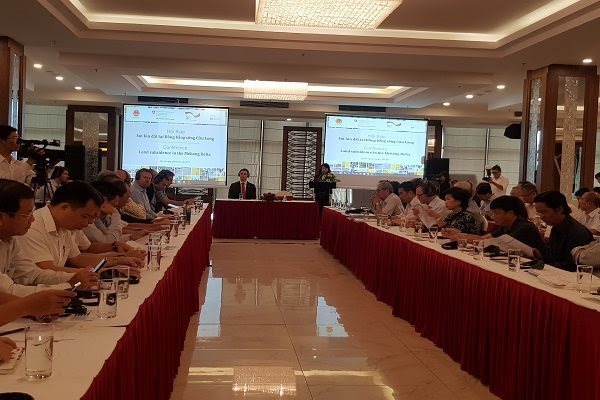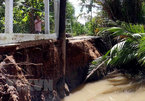 |
|
Representatives attend the conference in Can Tho City on November 22. The sinking of land in the Mekong Delta region is worsening, with its urban areas showing the highest rate of sinking, at a rate that is four times faster than in the countryside
|
At a conference held in Can Tho City on November 22, entitled “Land Subsidence in the Mekong Delta Region,” Olaf Neusser, a representative from the German international cooperation agency GIZ, said the sinking of land has continued throughout the Mekong Delta region’s tectonic process. However, the region has been quickly refilled by alluvium sources and sediments.
Currently, land sinking in the region is occurring faster than the rising of the sea level, Neusser said, citing statistics gathered from late 2014 to early 2019, as indicating that land subsidence is worsening.
In many urban areas, including Can Tho City, most of the locations in the city are suffering from sinking at a rate of two to four centimeters per year. The region is forecast to continue experience sinking in the near future.
Meanwhile, the surface in the countryside in the Mekong Delta region has sunk by one centimeter per year.
Nguyen Hieu Trung, head of the Institute of Climate Change Study at Can Tho University, cited the results of research conducted by the institute and Utretch University in the Netherlands as showing that the average subsidence in the region is two centimeters per year, with Ca Mau Peninsula registering the area most quickly sinking.
Trung said that deep beneath the surface layer of the land in the Mekong Delta is mainly sand, coupled with a weak land surface, and the construction of houses and traffic infrastructure has contributed to the sinking.
Apart from agricultural activities, over-extraction of groundwater is one of the major causes of land subsidence in the region.
Neusser said that it is necessary to conduct more studies to further understand why the sinking is occurring rapidly, so that officials might propose effective measures and strategies to respond to the sinking.
Duong Van Ni from the Environment and Natural Resources Department of Can Tho University pointed out that over-extraction of groundwater, shortages of alluvium, rapid urbanization and rising sea levels are the main causes of the serious land subsidence in the region. SGT
Trung Chanh

Household wells blamed for HCM City subsidence
Thousands of households in the suburbs of HCM City are refusing to use tap water and continuing to exploit underground water, which is leading to saltwater intrusion and subsidence.

VN Environment Ministry to survey Mekong Delta’s subsidence
The Ministry of Natural Resources and Environment plans to make a full inspection of subsidence in the Mekong Delta provinces between 2020 and 2025.
 The sinking of land in the Mekong Delta region is worsening, with its urban areas showing the highest rate of sinking, at a rate that is four times faster than in the countryside.
The sinking of land in the Mekong Delta region is worsening, with its urban areas showing the highest rate of sinking, at a rate that is four times faster than in the countryside.